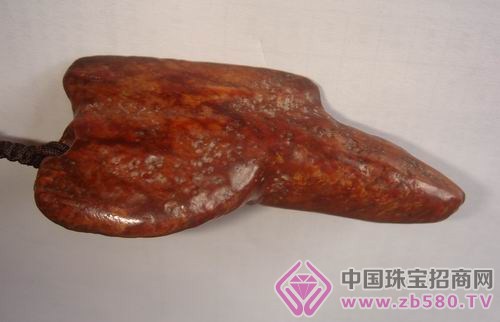Ancient "Jade Carving Craft" of Hongshan Culture Jade
China has a history of thousands of years of jade. In the long history of development, people have different values ​​and uses of jade in various historical periods, and the carvings are also very different. The earliest people focused on the use value and aesthetic value. For example, the Chahai culture jade has jade pipes, jade pendants and other decorations and jade axes.
In the Neolithic Age, jade was gradually used in religious ceremonies, as a ritual of samurai and as a ritual ritual, or as a burial object buried in the tomb. According to the unearthed jade, literature, images and other materials, the tools of ancient Chinese jade carving jade are few and simple. The carved ornamentation is transformed by the dexterous hands of the jade. The most representative of the Neolithic jade carving craft is the Hongshan culture jade in the northeast region, and the Liangzhu culture jade and the Lingjiatan culture jade in the East China region.
The Hongshan culture jade is an agricultural culture created by a tribe that is active in the north of the Yanshan Mountains, the Daling River and the upper reaches of the West Liaohe River from 5000-6000 years ago. At that time, the handicraft industry reached a very high level, the most distinctive is the pottery decorations and highly developed jade craftsmanship. The jade is made by grinding, and the surface is smooth, crystal and bright, and it has a charm. It was named after the discovery of the Hongshan post-site in the suburb of Chifeng, Inner Mongolia Autonomous Region.

(1) Types of jade articles
So far, the jade articles of Hongshan culture have been unearthed in the past 100, and there are many kinds of jade articles. According to the use function of jade, it can be divided into rituals, decorations, and some jade articles have various functions.
Ritual: There are jade dragon, jade pig dragon, square dragonfly, hook cloud jade and so on. The ritual is a jade used by prehistoric people to worship the gods.
The most typical jade rituals of Hongshan culture are C-shaped dragons, jade pigs, and hook clouds.
C-shaped dragon, also known as the first dragon of China, has a curly C-shaped body, a high snout and a flying hair. The Hongshan culture "Jade Pig Dragon" has a head like a beast. The body is the same as the Chinese first dragon mentioned above. It also curls the C-shaped shape and has a circular hole for hanging behind the head.
Yuzhulong is more representative in Hongshan culture jade. He has his figure in almost all the cultural materials of Hongshan. Therefore, some scholars believe that “Jade Pig Dragon†is the emblem of the same cultural community. It may be the national emblem of the ancestors of Hongshan culture. The jade pig dragon is made of 岫岩软玉玉, the pig's first dragon body, the dragon body curls like a C-shaped, connected end to end, the body is thick and the shape is rough. The image of the pig's head is vivid, the ear is big, the big eyes are wide, the mouth is convex, the mouth is slightly open, the teeth are exposed, and the face is in the shade of the eyes and wrinkles. The central annulus is smooth and there are small holes in the back that can be worn.
Hook-cloud-shaped jade is also the representative of Hongshan culture. Most of these jade articles are flaky, with jade-shaped edges at the edges. The shapes are more abstract, and the patterns appear in different patterns. Some are like moiré, and some are like twisted dragons. Like a bird, some like a flower. There are many kinds of jade articles, some of which are called cloud-shaped peony, some are called dragon-shaped peony, some are called bird-shaped peony, and they are commonly referred to as hook-shaped jade. Hook-cloud-shaped jade is usually unearthed in the higher-level central tomb, and is placed in the key parts of the human body such as the chest of the tomb.
Decorations: string ornaments, jade bracelets, horseshoes and various animal-shaped jade and other accessories. The animal-shaped jade articles mainly include jade ornaments such as jade turtles, jade fish, jade birds, and jade dragons. Other Pei Yu has a hook-shaped jade ornament, a horseshoe-shaped jade hoop, and a beast-faced tooth shaper.
(2) Modeling and crafts
Geometry and animal shape are the main body of Hongshan culture. The characteristics of Hongshan culture are characterized by shallow straight lines or strips, thick and shallow intaglio lines or thick grooves. The beast's eyes are dripping, round, and almost all jade have one or several perforations.
(3) Process
The jade articles of Hongshan culture are basically based on materials and materials. The main processes are cutting, cutting, honing, perforation and polishing. The method of perforation consists of two sides crossing obliquely, and some of them are facing each other through the face, causing the holes to be large and small at both ends. One-sided perforation forms a small hole with a large head, also called a horn hole. Moreover, there are step marks in the holes. Therefore, there are traces of processing in two ways in the concave groove on the jade, which is one of the characteristics different from the modern jade.
BFE90 Medical Mask Melt Blown Non-woven Fabric
Meltblown Fabric,Non Woven Products List,Non Woven Fabric Raw Material,Bfe90 Meltblown Nonwoven Fabric
Ningbo Dokee New Material Co., Ltd. , https://www.aumaterial.com